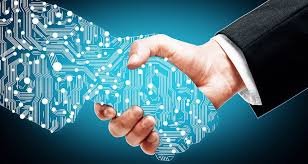
The Covid-19 pandemic has drastically shifted almost every global norm we were accustomed to even six months ago, from how we interact and travel, to the way we work and are educated. And one of the biggest changes has been our relationship with technology.
Since most of the world went in lockdown during March, our reliance on technological solutions has increased dramatically, and almost single-handedly helped us get through the crisis. Indeed, many of the societal changes are actually underpinned by technology. For example, working from home has been made possible thanks to online business solutions, while digital communication software like Zoom and Google Hangouts has helped us stay in touch with one another.
But beyond the ones we interact with directly, there are many other ways in which technology has proven critical to society’s coronavirus crisis response — without them, who knows how much worse the situation could have been?
Many supply chains experienced significant disruption, relying on paper-based record-keeping, providing an insufficient visibility of data, and a lack of diversity (such as having all manufacturing plants being in one place). All of these factors made businesses especially vulnerable to the pandemic’s effects, even before the downturn in consumer spending. But since then, more companies are harnessing Industry 4.0 technologies to help build more resilient supply chains. Supply chain 4.0 solutions include the Internet of Things, big data analytics, cloud computing, blockchain, and artificial intelligence. These technologies create greater interconnectivity between different parties, with better visibility, integration, and flexibility in processes.
“COVID-19 is vastly accelerating digital transformation [of supply chains],” Mary Long, director of the Supply Chain Forum at the University of Tennessee, Knoxville, told Supply Chain Drive. “Companies that have always taken the safe, always-as-it-was approach are suddenly looking at anything that takes touches out of the system.”
Take SAP and its supply chain management solutions, for instance, which include machine learning algorithms for accurate forecasts, dashboards for status monitoring, and real-time cloud collaboration capabilities. The company saw its profits grow by 7% between April and June, as businesses flocked to use SAP software to “rearrange their supply chains disrupted by lockdowns”. SAP has long been incredibly popular here in the UK, providing job opportunities across the country thanks to the huge interest in its software across various sectors, and major British corporations from Vodafone to Deloitte rely on its supply chain solutions.
Telehealth systems enable people to manage their healthcare and share information with medical professionals using computers and mobile phones. For example, a patient may wear a device into which they can enter their vital signs, or have it collected through blood pressure readers, pulse oximeters, and blood glucose monitors. This means that individuals do not have to visit their GP or a hospital which, with most people unable to receive in-person healthcare during the pandemic, has been vital.
According to McKinsey, the number of consumers using telehealth solutions soared from 11% in 2019 to 45% in 2020. It has proved popular with health providers too, and 57% of respondents view the technology more favourably than they did prior to the pandemic, and 64% are now more comfortable using it. Meanwhile, the Royal College of GPs praised the technology for its “remarkable” role during the pandemic, calling for greater investment in telehealth going forward.
Contact tracing should help reduce the spread of COVID-19 as all the people who have been in close proximity to someone with the virus are meant to be alerted, and then either tested or told to isolate. However, this isn’t a comprehensive approach, as contacts could easily be missed. For example, an individual with COVID-19 may not have any idea how to contact someone they stood next to at a train station for 15 minutes. Luckily, the use of contact tracing apps can help fill in the gaps of this approach.
Rolled out in countries like Australia, China and France, these apps tend to use Bluetooth signals to log a user’s proximity to others on the app. This notifies people if they’ve been near someone with COVID-19, and advises them to go into quarantine if necessary. Despite a low uptake in many countries thus far, every case matters — if just one infection can be prevented, lives could ultimately be saved. As Colm Harte, technical director of the company behind Ireland’s track and trace app: “If you break even a few transmission chains as a result of the app, for me that’s a success.”